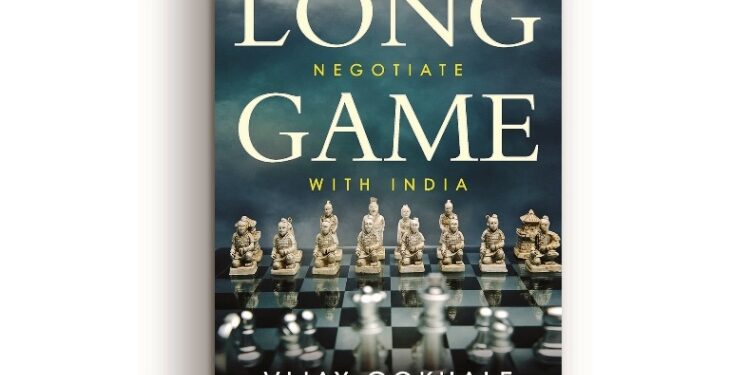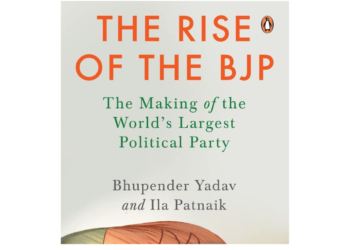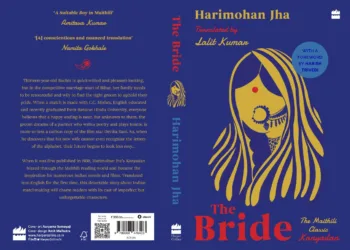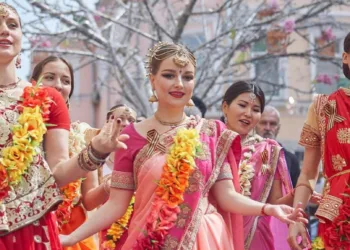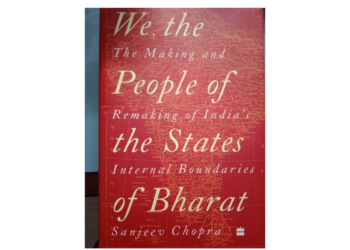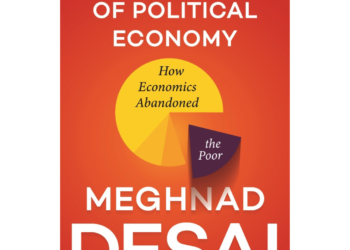Ambassador Vijay Gokhale traces the Chinese tactics and Indian naivete of the 1950s, and how India picked up the game and countered Beijing’s moves
BY DR SANJEEV CHOPRA
India has not and will perhaps never be able to forget the ignominious defeat at the hands of Chinese forces in the month-long engagement of 10,000 ill-equipped Indian troops against 80,000 trained troops of the PLA from October 20 to November 19, 1962 in which China took possession of the Aksai Chin before declaring a unilateral ceasefire. Described as a ‘Himalayan Blunder’ by Brig. John Dalvi, the defeat led to the resignation of Defence Minister V.K. Krishna Menon and the Army chief, Gen. P.N. Thapar. Prime Minister Jawaharlal Nehru could never recover from this shock, especially as the Opposition lost no opportunity to remind him of the prescient words that Sardar Vallabhbhai Patel wrote on November 7, 1950, that “even though we regard ourselves as friends of China, the Chinese do not regard us as their friends….The Chinese government has tried to delude us by professions of peaceful intention. They managed to instil into our Ambassador a false sense of confidence in their so-called desire to settle the Tibetan problem by peaceful means. The action of the Chinese, (with regard to PLA in Tibet) in my judgment, is little short of perfidy”.
However, this debacle forced everyone in India—the army, the diplomatic corps, the bureaucracy, the media, and political parties— to think deeply about China and understand that China posed a bigger threat to India than Pakistan. On the political front there were interesting fallouts. The Dravidian parties firmly aligned themselves with the nationalist cause, and even though there was dissension in the Communist Party of India (CPI), the majority faction—led by S.A. Dange and P.C. Joshi—decided that nation came before ideology. The nation came together in its grief, but it also set in motion a rethinking of our strategic doctrine vis-a-vis China.
The lessons that India has learnt since then have been documented in Vijay Gokhale’s masterly treatise, The Long Game: How the Chinese Negotiate With India. It covers the gamut of India-China relations from 1949 to 2019. Just as Henry Kissinger’s book, On China (2011), helped in an understanding of the US perception of the games the Chinese play, Gokhale’s book offers invaluable insights into where we went wrong in the first decade, and how we have now begun to understand the strategic game of China.
The six themes that Gokhale covers in his book include the recognition of the People’s Republic of China (PRC) by India in 1949, the agreement on trade with Tibet in 1954, India’s nuclear tests in 1998, the formal recognition of Sikkim in 2005, the negotiations on the 2008 nuclear deal with the US and, finally, the listing of Masood Azhar as a terrorist in the UNSC sanctions list.
Both India and China became independent around the same time, but China was locked in a bitter struggle between the nationalists (KMT) led by Chiang Kai-shek and the communists led by Mao Zedong. However, for the record, it must be stated that Chiang Kai-shek’s regime had reiterated that Tibet as a part of China did not acknowledge the Simla agreement of 1914 or the McMahon Line as the boundary. Meanwhile, in October 1947, when the KMT and CPC were locked in a bitter struggle for supremacy, the Dalai Lama’s office in Lhasa addressed a letter to Nehru seeking a return of “all our indisputable territories gradually included into India … parts of modern-day Arunachal, Ladakh, Darjeeling, Sikkim, and Bhutan”
Of course, the Dalai Lama’s claims had no military backing, and K.M. Pannikar, our ambassador to China, felt that compared to the KMT, the CPC under Mao may give greater credence to India’s interests in Tibet. Even though Patel was reticent, Nehru was keen to be the first among the Commonwealth nations to recognise the PRC. However, as Mao told Stalin, “we believe that we should not rush to be recognised. We must first bring order to the country, strengthen our position and then we can talk to the foreign imperialists”. But Nehru and Pannikar rushed to recognise China even as Girja Shankar Bajpai was keen to raise the “special relationship with Tibet”. Pannikar held the view “that since China had not raised the issue, it would be prudent to proceed on the assumption that the new regime did not intend to rake up the historical past of India’s northern frontier”. Nehru believed that India’s early recognition of China would give it some leverage in building strong relations with the country. “India erroneously assumed that recognition of China would ipso facto lead to establishment of diplomatic ties, but China insisted that India sever its ties with the KMT which still held Taiwan, without any reciprocal assurance from their side about India’s interests and special relationship with Tibet.”
India could not understand China’s strategy for Tibet largely because our political leadership was perhaps too trusting—or naïve, to put it more bluntly. China used all its cards tactically while India chose grand ideological positioning, and punched much higher than it was capable of diplomatically, politically, and militarily. China gave India the impression that it could mediate between Tibet and China, even as the PLA was stepping in to occupy Lhasa. It then asked India to withdraw its military escorts in Gyantse and Yadong as a gesture of goodwill, convert the mission in Lhasa to a consulate general and in the process also got one sanctioned for itself in Bombay. Nehru invited Mao as the chief guest to the first Republic Day parade in January 1951 while the Chinese in their internal memos continued to regard him as an “imperialist lackey”. Also, by a very clever stratagem, the negotiations with Nehru were undertaken not by Mao but by Zhou Enlai, the prime minister, who was equivalent in protocol to Nehru even though effective power reposed with the former.
While China was consolidating its hold on the ground, Nehru assured Parliament in November 1951 that the “McMahon line is its boundary, and would remain so, map, or no map”. On the other hand, the Chinese chose their words very carefully. In 1952 Pannikar was told that the Chinese saw no difficulty in India safeguarding its economic and cultural interests in Tibet, conveniently ignoring that India had economic, cultural, and political interests: in fact, India was the only country which had a diplomatic and military presence in Tibet. Again, under instructions from Nehru, the first Hindi map of India produced in 1952 used the word Cheen (China) to describe our northern borders whereas the British India maps had always referred to the region as Tibet!
Post-1962, India learnt its lessons and from then to now, we have been able to match the Chinese in their games. As Gokhale avers, we have now understood the Chinese stratagem of paying full attention to pre-negotiations, agenda setting, propaganda, non-official statements and outreach to collaterals involved in negotiations. It chose its negotiators with care, who in turn use many Chinese proverbs, flatter their counterparts by bestowing a Chinese name on them and offering hospitality much above their status, even while leveraging their ‘hegemonic’ position by virtue of being a member of the UNSC. Even after the agreement is signed, the Chinese engage in what is called ‘post negotiation’ to ensure that the narrative is managed. This ‘communique’ can then be used to twist the agreed upon text. They also make extensive use of their think tanks, and the international department of the CPC to hold talks with the political leadership of communist and likeminded parties, exchange programmes and the network of journalists and media personnel, who owe their affiliation to the CPC. Thus, the Chinese approach the negotiation process holistically. However, as the old adage goes, “you can fool everyone for some time, some people for some time, but no one forever”, and the Chinese game is now better understood by India—we have, after all, been the victims of this stratagem. And so, in all our subsequent negotiations—on Sikkim, on our nuclear deal with America and in getting Masood Azhar declared as a terrorist, India has dealt its cards with equal, if not better, felicity, and shown the Chinese that we too are masters in the strategy game.
Gokhale has dedicated the book to the officers of the Indian Foreign Service. I would, however, recommend that it be also read by the mandarins of the finance, defence and home ministries—for the only way to equal China is to understand their stratagems and beat them in their own game!
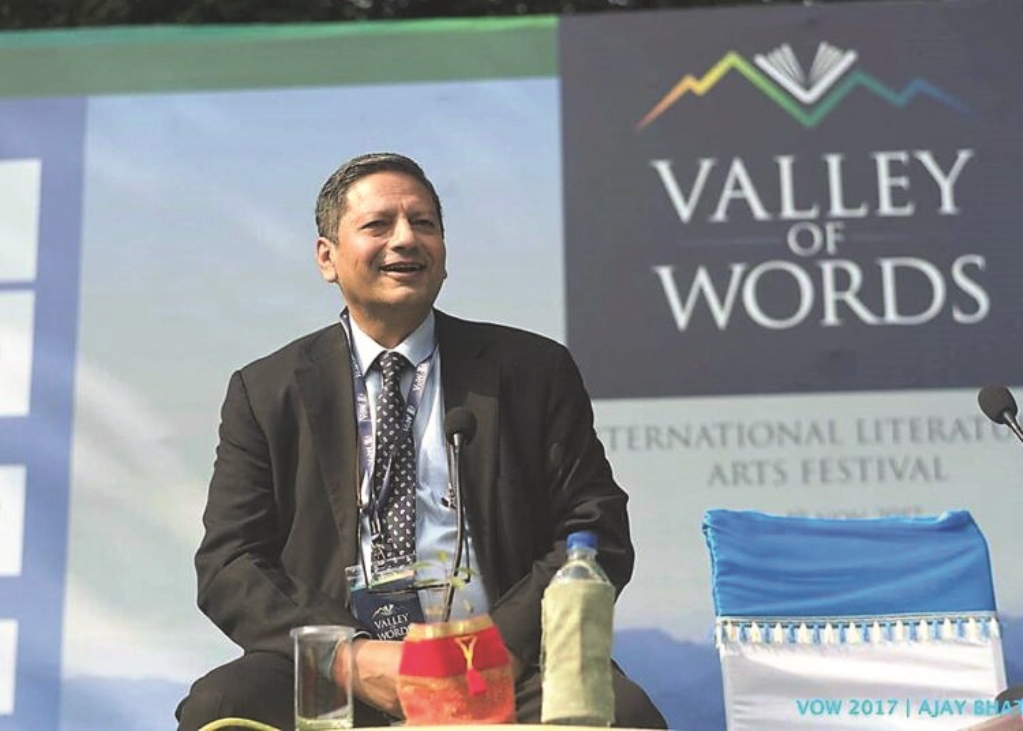
(The author is a historian, public policy analyst, and Festival Director at the Valley of Words, Dehradun. Until recently, he was the Director of the Lal Bahadur Shastri National Academy of Administration, Mussoorie.)


